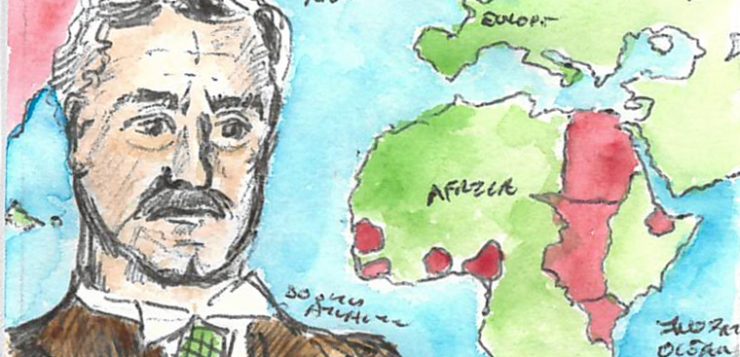When the topic of human rights arises, the atrocities of the British Empire have historically gone unnoticed due to a lack of information. However, research conducted by Caroline Elkins, Madhursee Mukherjee and other historians, has uncovered some of the appalling human rights abuses committed by the British Empire. In this article, I will focus upon the Kenyan Mau Mau Uprising and the famine in Bengal, India.



Mau Mau Uprising, Kenya – (1952-1960)
In 1920 the British Empire moved into East Africa, with Kenya declared a colony. After 30 years of British rule, the country’s largest ethnic group – the Kikuyu –opposed colonial rule through the creation of the ‘Mau Mau movement’, which turned into a rebellion. In response, the Kenyan colonial government declared a state of emergency in 1952 for 8 years. The government forcibly removed 1.5 million Kenyans from their homes to detention camps or ‘protected villages’, claiming that they were supporters of the movement. Residents were subjected to forced labour, systematic torture, sexual assault, starvation, and murder. Historians have oral records of survivors explaining their experience of the government’s human rights violations in these camps:
A man, now 83, suffered regular torture including a punishment which involved being made to dig a hole with his index finger by constantly turning his crouched body in a circle, causing dizziness punished by further beatings.
A woman, now 76, details how as a 14-year-old girl she and her family were brutalised during a raid by colonial police before two white soldiers forced her to have sex with her own father while they looked on.
These survivors later placed a case against the British Government in which they sought compensation not only for the brutal acts, but also the loss of family life, education and income caused by the relocation. What is inexcusable is that the Empire at the time was fully aware of these detention centres but took no action against them. In 2016, the British Government paid the survivors £20 million in compensation, with the acknowledgement from the Foreign Office that the accounts and claims were true.
Bengal Famine, India – (1943)
While Bengal suffered from famines following the British Empire’s invasion of India, the worst of these famines – regarding human rights abuse – was in 1943. The famine led to 3 million deaths, with the few who survived eating grass or human flesh. Between January and July 1943, India was exporting more than 70,000 tonnes of rice for British consumption or war aid even during the height of the famine. When Churchill was asked to export food to India, it was claimed that there was a shortage of ships despite Australian wheat being delivered to Europe while passing Indian borders. Additionally, authorities destroyed rice stocks and removed boats from Bengal due to a fear of Japanese invasion.
During the autumn of that year, the stockpile of the British Empire’s food for its population of 47 million (14 million fewer than Bengal) amounted to 18.5 million tonnes. Despite this stockpile, the famine only ended at the end of the year after survivors harvested rice and Canadian shipments of wheat and barely reached India. By that time, tens of thousands had already died from starvation.
These are not the only atrocities committed by the British Empire. Other examples include the Boer concentration camps in South Africa, where women and children died from disease and scarcity of food. 1000 peaceful protesters were killed by Reginald Dyer and his men during the Amritsar Massacre. During the 1960s, nationalists in Yemen were kept naked in refrigerated cells in torture centres in Aden. Finally, Aboriginal and Indigenous people in Australia were systematically killed.




